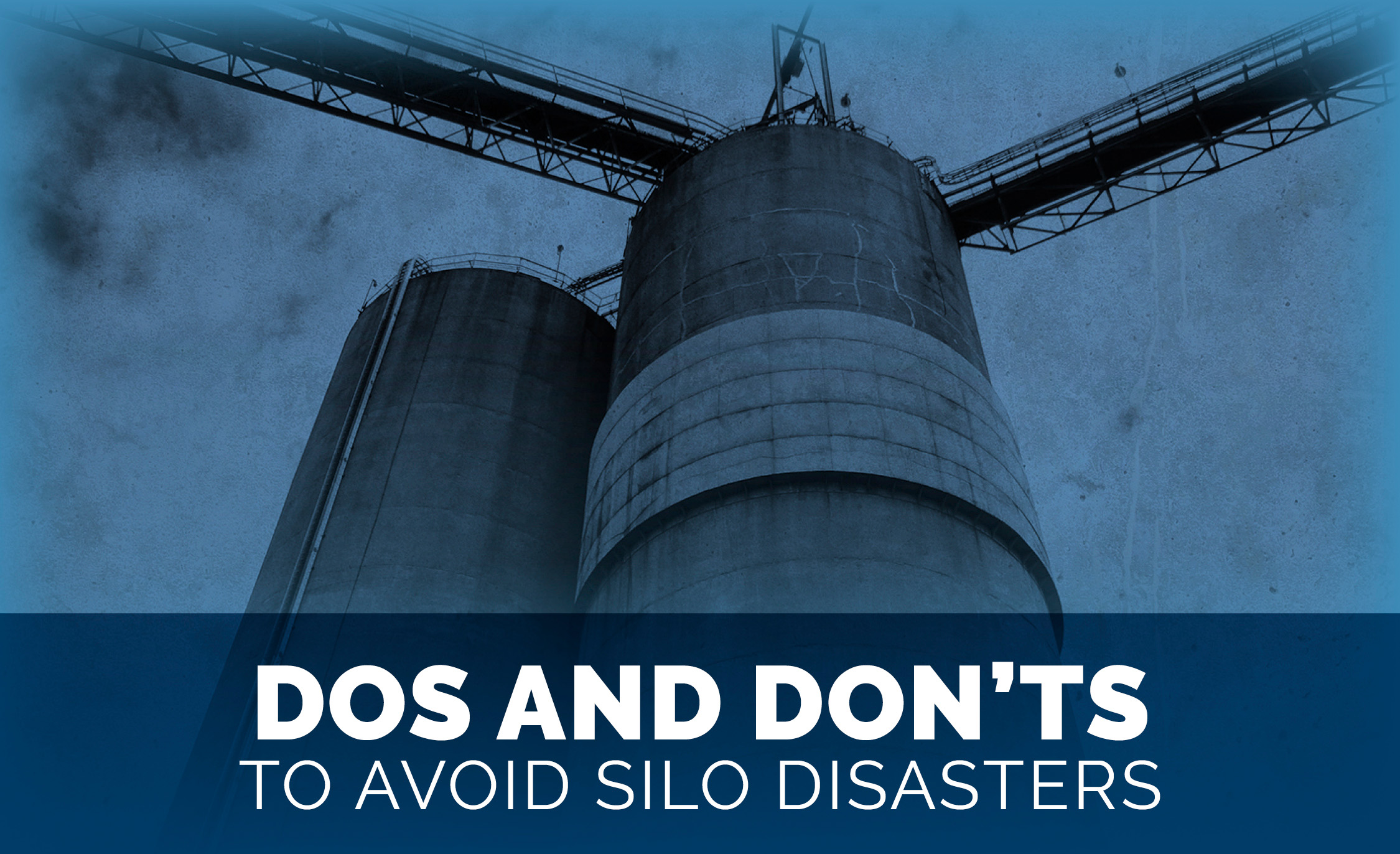CATEGORIES

Modern silos have been used since the late 19th century. Yet since that time, their design, construction, and recommended maintenance services have undergone drastic changes to improve safety. Here are the top ways facility owners and managers can help prevent storage silo disasters.
|
|
||||||||||||||||||||||||||||||||||||||||||||||||||||||||||||||||
Is your silo in need of repair or restoration? Contact us today for a quote.
Maintaining your silo for years to come starts with just that - maintenance. While you might not be able to control every factor that can impact your production schedule, you do control your silo maintenance. Proactive maintenance is the most effective method to ensure the integrity of concrete and steel silos.
If a silo falls and no one is around to get hurt, does it still cost you big time? Keeping up with preventive maintenance is crucial to increasing the life of your silo, as silo failures are often easily prevented. Many structural silo issues can be easily and economically addressed if caught and addressed early.
Prevent the Problem with Regular Silo Maintenance
A silo maintenance program should be comprehensive and include routine silo cleaning as well as inspection. Bundling these services allows a professional silo inspector to view all areas of the silo interior and catch any causes for concern before they become major and expensive problems. Regular silo inspections should happen either annually or at two to five-year intervals, depending on several key factors that influence how often you need a silo inspection. Sticking to a schedule recommended for your specific industry and practices ensures the early identification of problems that increase the risk of silo collapse or structural failure.
So how do you know what silo maintenance is needed to prolong its useful life? Following a thorough, professional silo inspection, you receive a detailed list of recommended maintenance. Implementing the recommended repairs and preventive maintenance sooner rather than later helps keep your silo healthy and can prevent larger, more expensive repairs later.
Just as routine silo inspections are an essential component of your maintenance program, so are regular cleanings. Regularly cleaning your silo can help keep it operating efficiently and limit potential liabilities. With rising temperatures comes rising humidity - a natural enemy of many stored materials that hydrate and cause blockages as well as lost product. Regular cleanings also increase your silo's usable lifespan, minimize big-ticket repairs, and avoid more costly cleaning expenses. Silos that are emptied regularly and refilled will not have the same buildup issues as silos that are kept topped off, but every silo can benefit from a regular cleaning schedule.
Preventive maintenance is crucial when it comes to silos. Failing to complete preventive maintenance is a leading cause of costly, dangerous silo failure. Addressing minor issues as soon as they arise helps keep the costs of silo ownership low as major repairs, emergencies and structural failures are more expensive up front, take longer to correct and inevitably result in unplanned downtime. So how do you know how to prevent major issues when maintaining your silo?
While you can, and should, regularly examine your silo exterior for any signs of cracks, obvious damage or changes, professional silo inspection is the only way to identify essential preventive maintenance needs. Professional silo inspection covers more areas of the silo than an in-house inspection. Trained silo inspectors or silo engineers examine your silo(s) in-depth to look for serious issues and provide preventive maintenance suggestions that can help keep your silo in the best shape possible.
We offer three different silo inspection levels to meet the needs of any industry. From basic and augmented to comprehensive silo inspection or any level supplemented with our AI inspection service, our silo inspection components include examining key areas of potential failures, such as foundations, walls and roofs.
Prevention is the most effective method to ensure the integrity and continued operation of your silo. Regular maintenance and inspections can increase the life of your silo and ensure the safety of those working around your structures. Through inspection and maintenance, you increase the useful life of your silo, reduce unplanned downtime, and uphold production goals. What's more, the lack of silo maintenance is a leading cause of failure. The costs of keeping up with preventive maintenance are significantly lower than the price of major repairs or construction after a structural failure.



